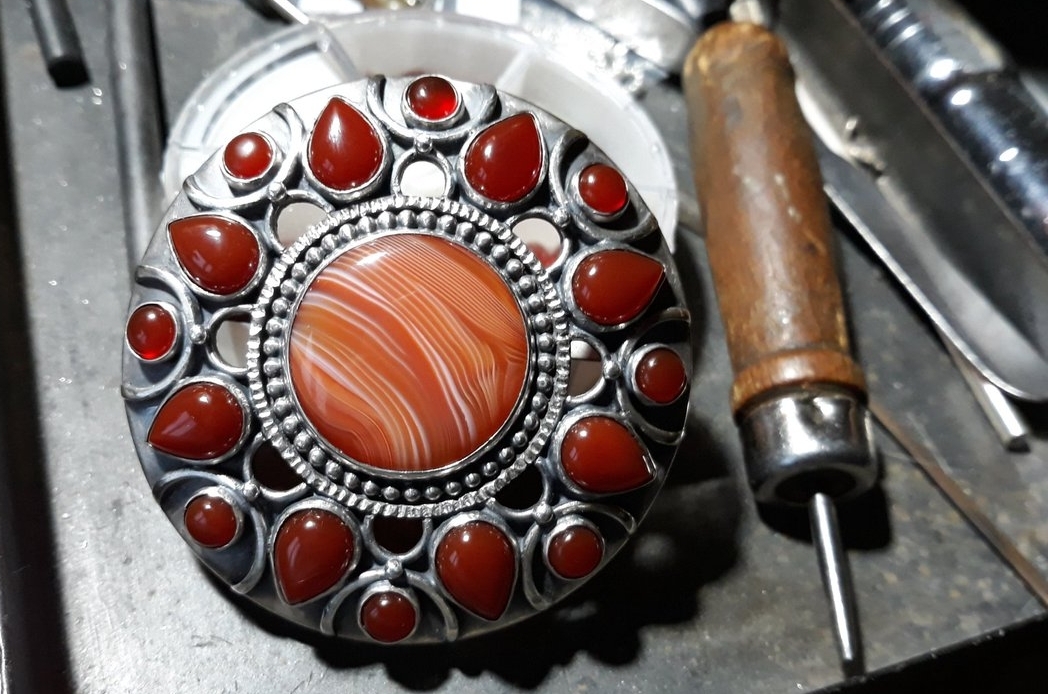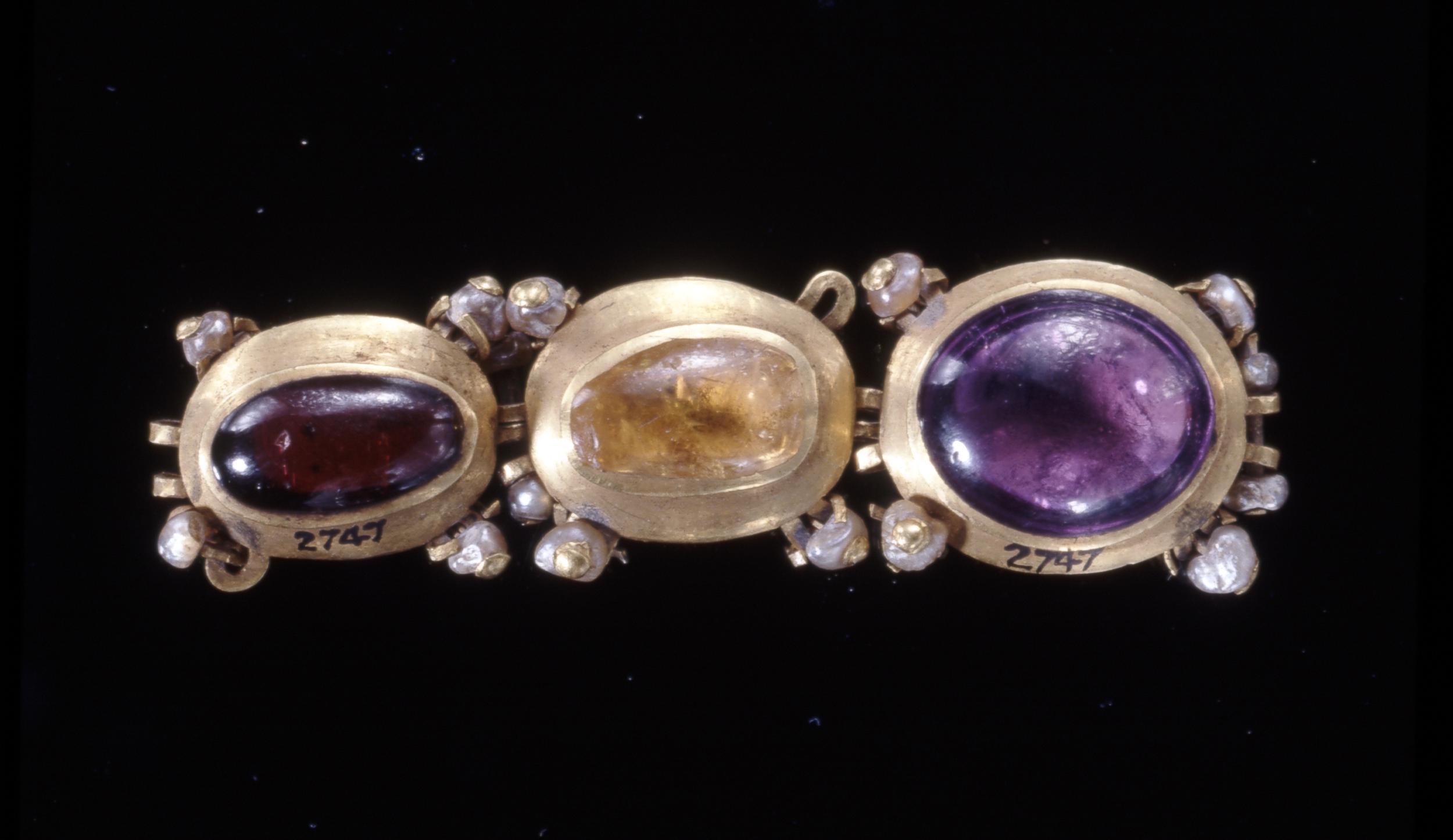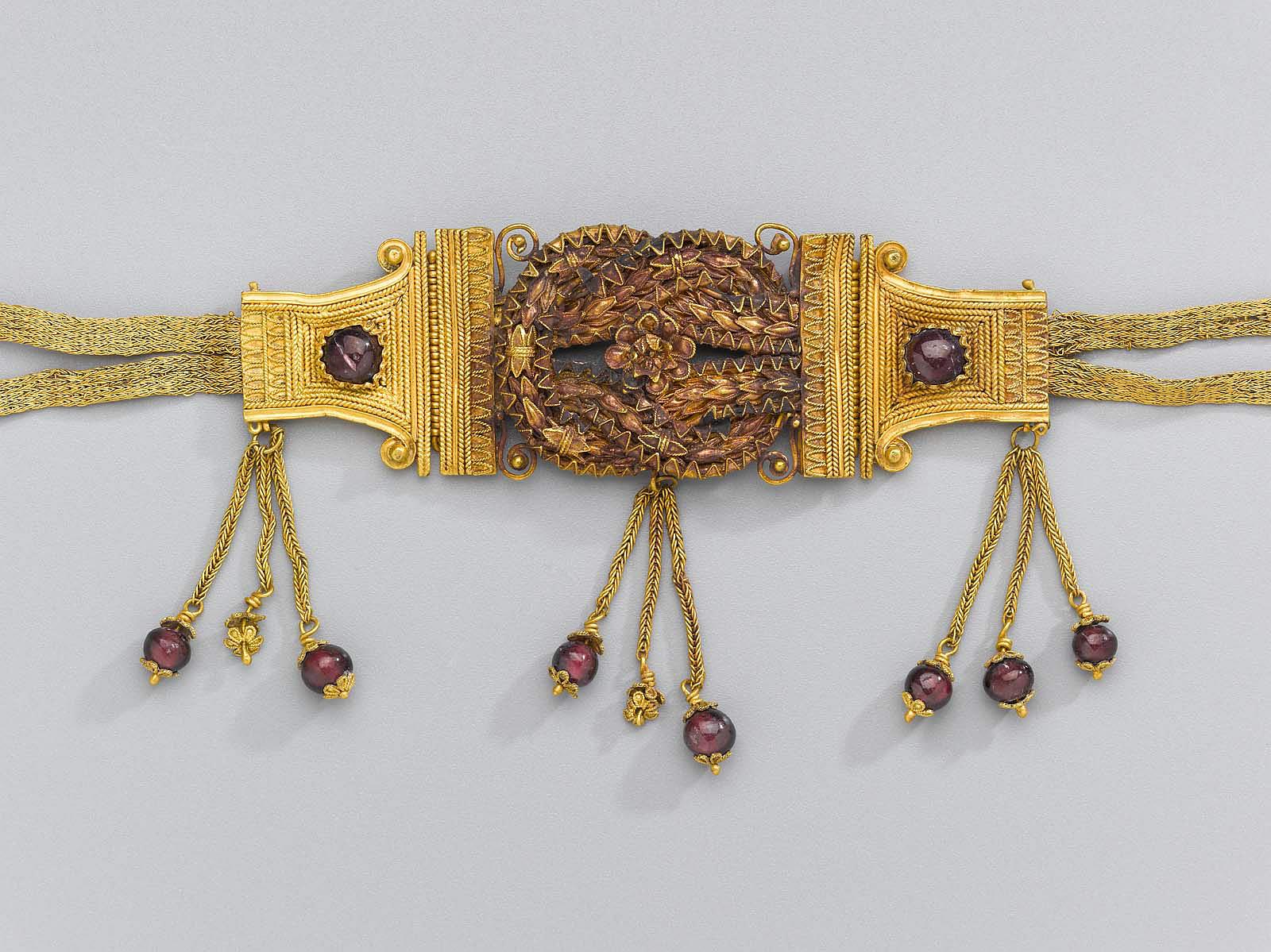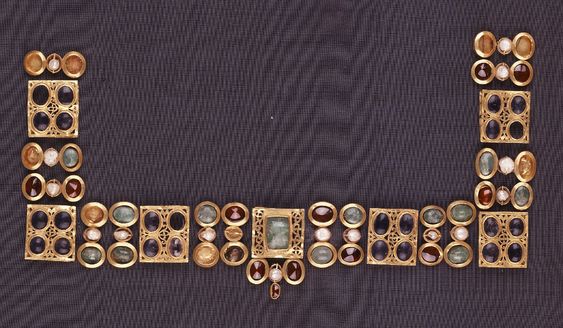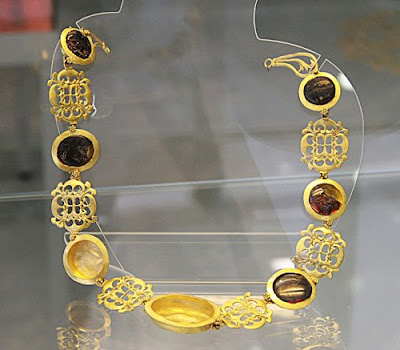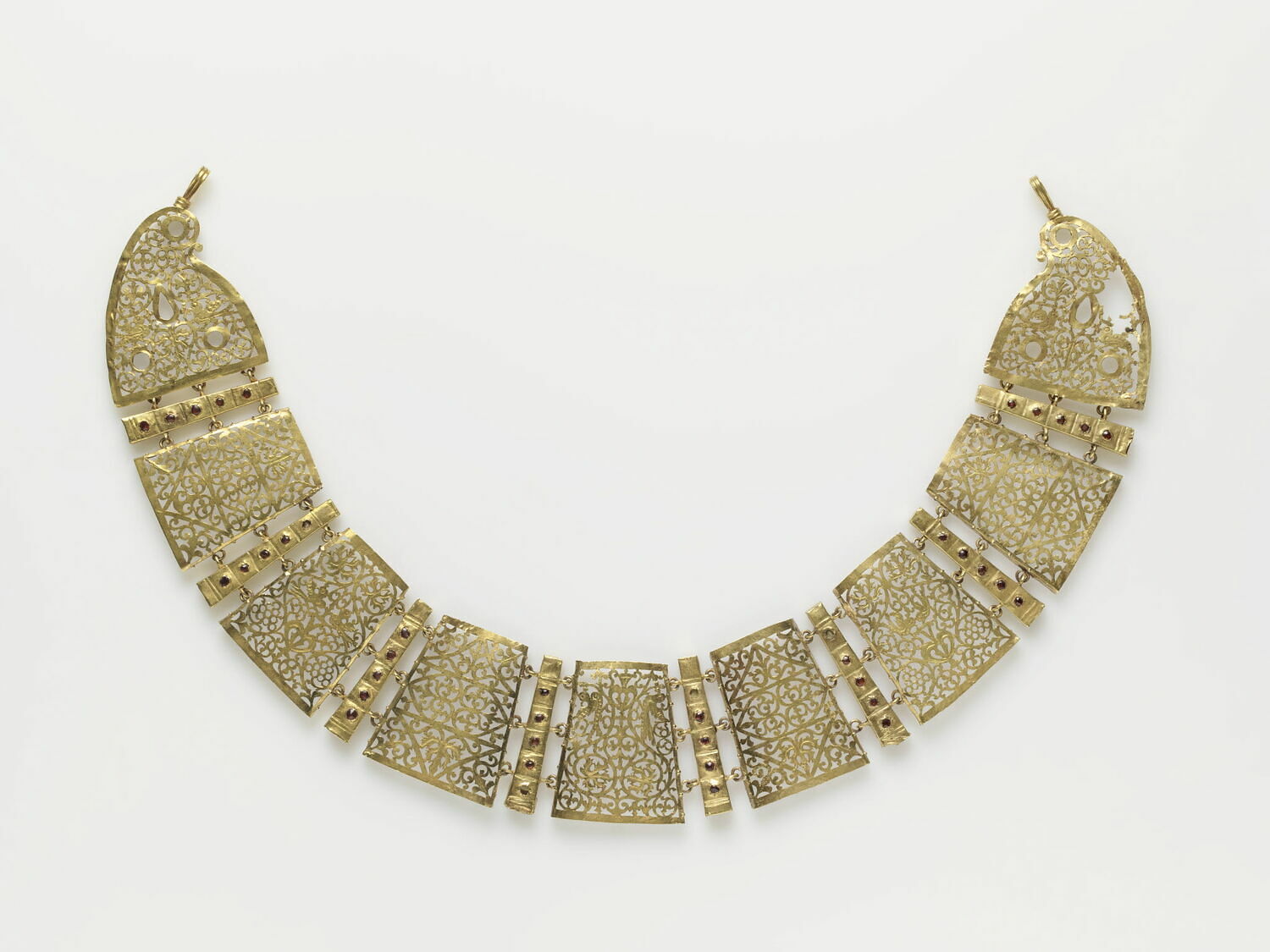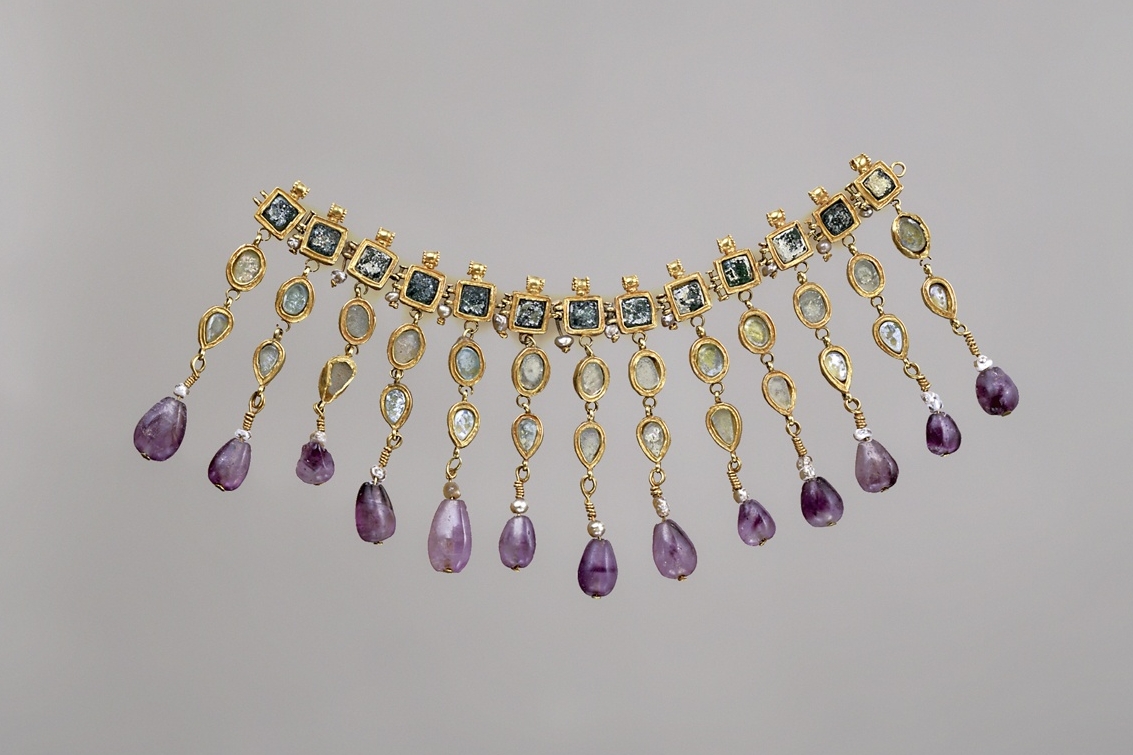W muzeum Erimtan w Ankarze znajduje się złoty ornament ozdobiony turkusem i karneolem datowany na III-IV w. ne. Na pierwszy rzut oka wyglądający jak kolczyk z podwieszkami ma z boku przylutowane dwa uszka, które sugerują oryginalnie istniejące połączenie zawiasem z kolejnym elementem, dzisiaj zagubionym. Sądzę, że ten ornament mógł być częścią diademu.

jewelry and gold artifacts from the Yüksel
Erimtan collection: examination of ritual and
artistic values. Anadolu Araştırmaları-Anatolian
Research, 31, 335–356.
https://doi.org/10.26650/anar.2024.31.1447619
“Cat. No. 14: Among the artifacts in the Erimtan Museum [Ankara, Turkey], the pendulum and probably hook artifact identified as Cat. No. 1423, is made entirely of gold and a solid filling hollow. The design includes a long, rectangular segment that widens in the center and terminates in pendulums. A round bluish-green turquoise stone is set into a slot at the top. The central section is adorned with a circular carnelian agate stone of a reddish-brown hue, positioned within a rosette decoration that extends inwards. Two thin, flat gold rings, made using the filigree technique, are soldered on either side of the piece. Two pendulums were originally passed through the rings at the base before soldering. These pendulums were inserted through a rectangular transitional element secured by hooking the ends of thin wires, which were then wrapped around the pendulum. One of these wires is broken, while the other retains a square-shaped decorative pattern created using the granulation technique. In the original form, the pendulum strings were probably decorated with semiprecious stones. This artifact can be compared to earrings dated to the 3rd century AD, categorized as hooked disc-and pendulum earrings in the collection of the Anatolian Civilizations Museum (Bingöl, 1999, pp. 88-91, Cat. Nos. 76-80, 83). Similar features include square or round rosette decorations centered with colored stones and completed with double or triple pendulums. Comparable examples from the Istanbul Archaeological Museum exhibit two pendulum earrings with square and oval-shaped rosette decorations, each centered with a semiprecious stone and adorned with three pendulums, mirroring the Erimtan artifact (Ergil, 1983, Pic. 121-122).
Artifacts dated to the 4th century AD also feature precious stones at the pendulum ends, and their rosette designs close resemblance to Cat. No. 14. Based on these comparisons and supporting literature studies, Cat. No. 14 has been dated to the 3rd–4th century AD.” [ Avli, A., & Aydın Tavukçu]
